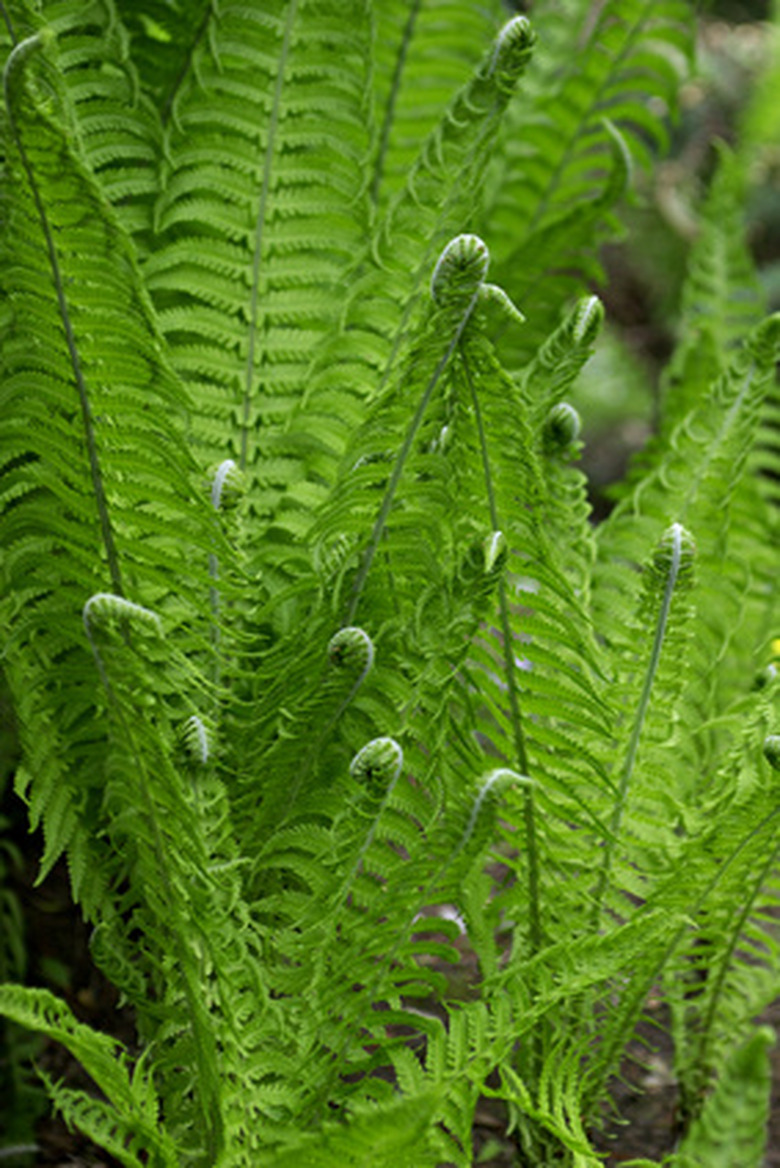What Are Some Plants That Make Spores Instead Of Seeds?
Two types of plants reproduce by spores rather than seeds. Bryophytes contain no vascular tissue, or the system of tubes and passages that carry water and nutrients to various parts of a plant. Some plants have vascular tissue but do not produce seeds; seedless vascular plants have true roots, stems and leaves. Seedless plants must live in moist areas because their sperm, which have tails, require water to swim to the eggs.
Liverworts
Liverworts (Hepatophyta) are bryophytes. There are 6,000 to 8,000 species of liverworts worldwide; they look like flattened mosses but lack stems. Their leaves have deep lobes or are segmented and are arranged in three ranks. Liverworts are from one-sixteenth to three-fourths of an inch wide and half of an inch long. They cling to rocks, the ground, trees, or wherever they can find a place to grow and spread by spores.
- Two types of plants reproduce by spores rather than seeds.
- Bryophytes contain no vascular tissue, or the system of tubes and passages that carry water and nutrients to various parts of a plant.
Mosses
Mosses (bryophyta) are like liverworts in that they do not have vascular systems. They look somewhat like liverworts, but they have stems and leaves. Also they have branching rhizoids that anchor them to the ground (liverworts have no rhizoids). The rhizoids absorb nutrients and water, but they are not true roots because they lack a vascular system; the lack of a vascular system limits their size.
Hornworts
The hornwort (Anthocerophyta) is another type of bryophyte. Hornworts are found all over the world growing in damp or humid places. They are flat and green, sometimes growing as tiny weeds in cultivated fields and gardens or on the bark of trees in the tropics.
- Mosses (bryophyta) are like liverworts in that they do not have vascular systems.
- They look somewhat like liverworts, but they have stems and leaves.
Club Mosses
Club mosses (Lycopophyta) are seedless vascular plants. They have branched stems that lay prostrate or creep. Thick covers of leaves that look like needles or scales cover their stems and branches. They live in humid areas of temperate zones and on mountains in the tropics. Other seedless plants in the same family include spike mosses and quillworts.
Horsetails
Horsetails (Pterophyta) are seedless vascular plants thought to be ancestors of modern trees, They grow as hollow, ridged stems. Their leaves are sheaths that encircle the shoots. They grow in moist rich soils, often found in soggy fields and at the edge of swamps. Some are evergreen, others send up new shoots each year from their underground roots. Related plants include ferns and whisk ferns. There are an estimated 12,000 species of ferns worldwide. Because those plants have vascular systems, they can grow larger than bryophytes.
- Club mosses (Lycopophyta) are seedless vascular plants.
- Because those plants have vascular systems, they can grow larger than bryophytes.
